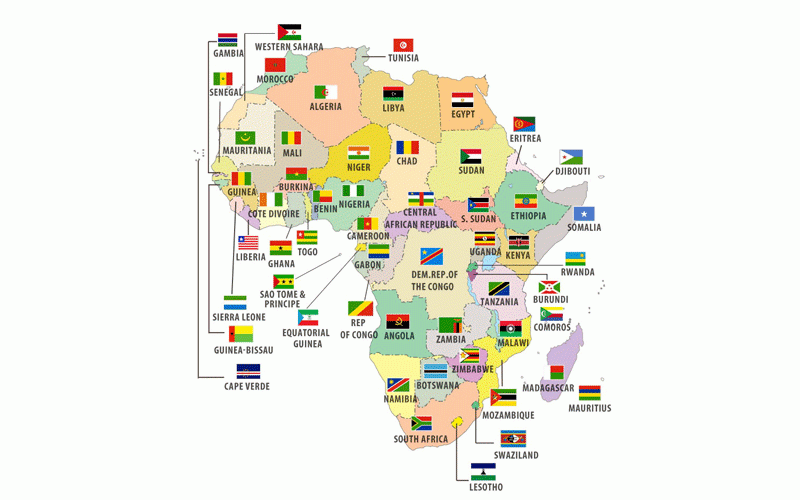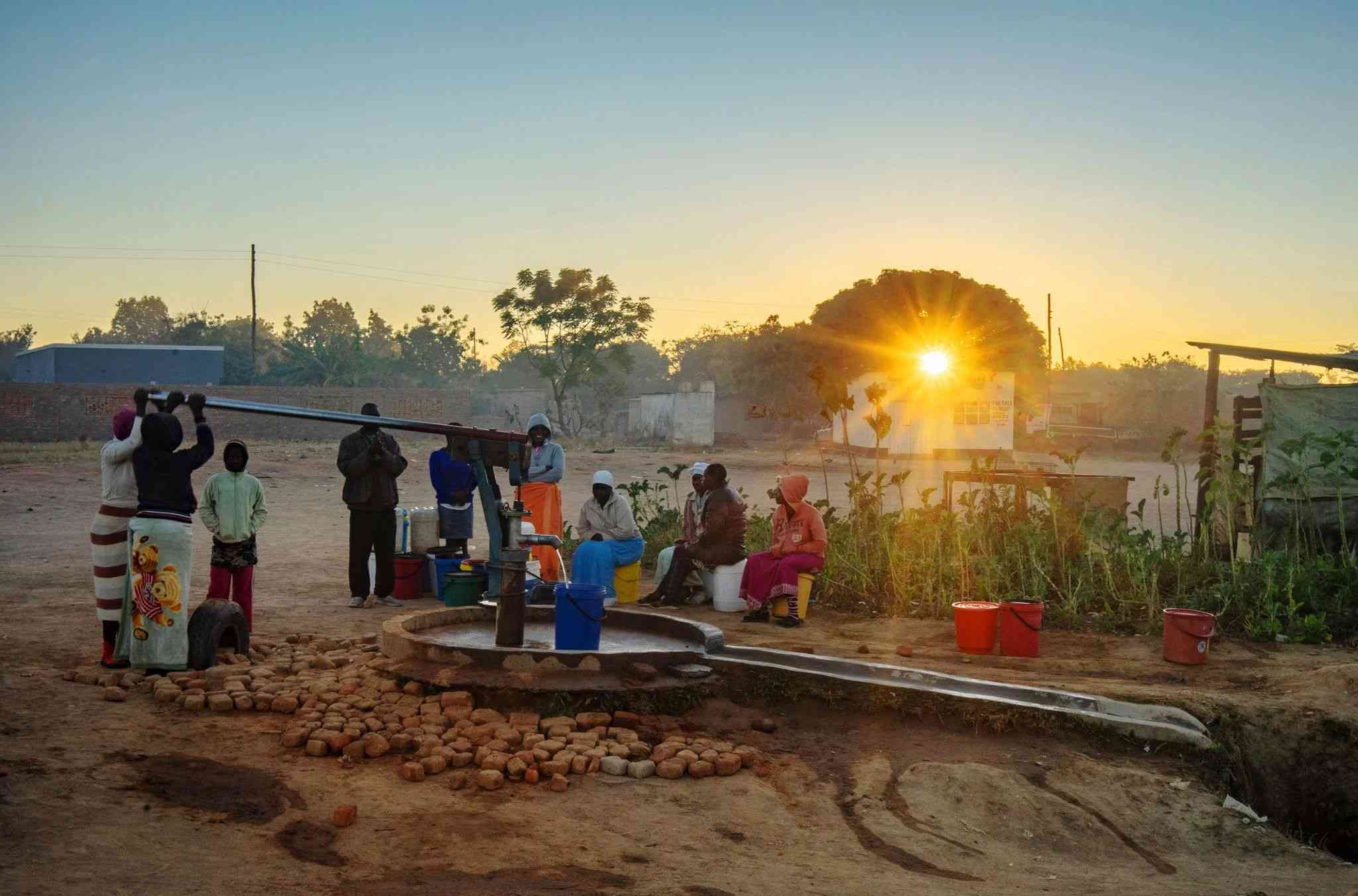
AROUND 1980, Zimbabwean women used to have an average of 6,61 children. So, on average, each woman would give birth to almost 7 children.
This helped to stretch the country’s population from 7,05 million in 1980, to the 16,2 million as of 2022. The actual growth, however, should also include Zimbabweans based in other countries, who are estimated to be anything between one and four million, depending on the data source that one uses.
If there are four million Zimbabweans in the diaspora that would mean the country’s citizens now reached around 20 million (16,2 million in the country plus four million in the diaspora).
This also means that Zimbabweans have managed to reproduce their population by almost 200%, from 1980 when it was a mere 7,05 million, to the current 20 million.
This huge growth has been realised in only 42 years (1980-2022). If this were to continue, a further 200% of growth in population numbers would result in a headcount of 60 million Zimbabweans, in the next 42 years, from 2022 to 2064.
However, that is now unlikely because local women are now giving birth to much fewer children in their lifetime. For example, the 2022 population and housing census, which was carried out by the Zimbabwe National Statistics Agency (Zimstat), shows that Zimbabwean women now give birth to an average of only 3,7 children in their lifetime.
So, the country’s fertility rates are almost down by whole three children, from 6,61 children per woman in 1980, to the current 3,7 children per woman.
The decrease in birth and fertility rates is unfortunate, because Zimbabwe’s population is still too small, when compared to regional peers, such as South Africa, Mozambique, etc.
- Mavhunga puts DeMbare into Chibuku quarterfinals
- Bulls to charge into Zimbabwe gold stocks
- Ndiraya concerned as goals dry up
- Letters: How solar power is transforming African farms
Keep Reading
With a land area of 39 million hectares, Zimbabwe just has a few 16,2 million people living within it. Nations of comparable size, such as Japan for example, whose land area is 37,8 million hectares, have as much as 125 million people.
Moreover, it is quite intriguing that due to its mountainous geography, only a small part of Japan’s 37,8 million hectares is habitable. That means the 125 million people in Japan are situated on a much smaller portion of land than Zimbabwe. The fact that Japan is the fourth largest economy in the world should also help to add context and show the importance of large populations for economic success.
The 2022 population census also revealed that Zimbabwe’s proportion of people who are aged 65 years and above is now a significant 5,8% of the total population.
This is a huge difference from the average for sub-Saharan Africa, which only has 3% of its population aged 65 years and above. It is crucial to understand the implications of such statistics because there are certain economic and social consequences which arise from an ageing population.
The world over, for a nation to be classified as having an ageing population, it has to have 7% or more of people who are aged 65 and over.
With 5,8% of the population being aged, Zimbabwe is fast approaching the 7% mark. Ageing is typically common in almost all rich (advanced) economies. However, it comes with costs which poorer nations, such as Zimbabwe, may struggle to afford.
Also, although the Zimbabwean population has more aged people than before, young people who are below the age of 35, still make up the majority of the population.
Those ones (under 35 years) make up as much as 67,7% of the population. This should be viewed as a strength since the young can provide labour and skills for the various domestic economic sectors.
Next week’s article will go on to explain how such strengths can be channelled for the country’s upliftment.
Consequences of current statistics
Due to the small population size of only 16,2 million inhabitants, Zimbabwean companies have a much smaller market to serve, when compared with firms in other countries.
South African firms, for example, supply goods and services to a domestic market, which has 62 million people. That naturally means that there is a high likelihood that South African companies are larger than Zimbabwean ones, whilst they also have larger production runs, which they need to maintain in order to continue supplying goods and services to the huge South African market.
As a result, most South African firms produce goods and services at lower costs than their Zimbabwean counterparts due to the economies of scale, which they benefit from, due to their massive production runs. This is one of the major reasons why South African, Chinese and other foreign firms have displaced Zimbabwe's manufacturing sector.
Imports from the aforementioned countries are usually cheaper and of a higher quality than local products. The same can be said for the local agricultural sector and other economic sectors.
Thus, as long as the country’s population is not comparable with other prominent countries within the continent and the world, it may prove harder for it to establish competitive companies.
Attracting major global companies may also require much more effort from the government, since the domestic market size is not as appealing as other regional peers (South Africa, Zambia, Mozambique, etc).
By virtue of their smaller domestic markets, nations such as Zimbabwe can also find it difficult to negotiate favourable investment and trade terms with other countries.
China’s joint venture law
When Western companies began to increasingly set up their manufacturing plants in China, around the 1970s, for example, Beijing immediately introduced various mechanisms to facilitate a transfer of “manufacturing know-how” from the foreigners to its citizens.
This knowledge transfer was managed through a “Law on Joint Venture Using Chinese and Foreign Investment” (of 1979), which demanded that, in certain critical industries, foreign companies would only be permitted to invest in China if they had a Chinese firm partnering with them (in a 50/50 joint venture project) and were willing to transfer their know-how within the process.
China’s government also requested that where joint ventures were not in force, western firms would transfer their knowledge to Chinese firms through consenting for them to use their technologies and know-how through licencing.
This meant that Chinese firms could pay a fee to the western licensor companies, whilst they got to acquire and use their know-how.
This is how China managed to gain exceptional skills in the manufacturing of vehicles and other sophisticated goods and services. Western academics argue that, if China did not have such a huge domestic market, the United States and European companies would have refused to comply with both the “law on joint ventures” and licencing requirements of the Chinese government, which led to a transfer of knowledge systems from the western firms, to China.
Zim’s indigenisation law
Zimbabwe had tried to do something of a similar nature with its “indigenisation and economic empowerment” laws. However, the laws seemed to have failed on account of two major issues.
Firstly, locals did not have sufficient capital to fund 51% ownership in major investment projects. So, they could not afford to meet foreign investors halfway (with their 51% of capital) in terms of fund raising.
Secondly, Zimbabwe’s population is still too small to command such concessions from foreign investors. This implies that huge corporations would simply skip Zimbabwe and settle for other countries, as their preferred investment destination.
When it comes to negotiations for better terms in international trade, it is also much easier for another country to sanction or adversely treat Zimbabwe’s exports, than it would do for huge countries such as China, Russia, or Brazil, for example.
Zimbabwe’s small population size means that any country which offends it in international trade (for example through banning Zimbabwean exports), has little retaliatory measures to fear.
However, if Zimbabwe’s population was 200 million, for example, any country which would offend it in international trade would fear retaliatory measures - which could be trade, military or sabotage countermeasures.
A smaller population also means that there are less opportunities for the country to innovate. With a larger population, for instance, at any given time, there are more people engaged in research or pursuing problem solving tasks, which can lead to innovative breakthroughs.
That is also one of the reasons why countries, such as Japan, China, the US and Brazil, have more innovations and research breakthroughs than most small nations.
Their huge populations increase the likelihood for their many researchers to discover innovations. Put simply, at any given time, Zimbabwe has much fewer researchers than China, for example.
A country’s military strength is also dependent on the size of its population. A large population generally implies more government tax revenues.
This means that huge countries can afford to pay and deploy more soldiers than their smaller counterparts, in the case that there is a conflict.
Also, when technologies are equal between countries, it is the size of their military deployments, which can determine who will win or lose in the event that they fight each other.
Small nations, thus, cannot draw the attention of advanced economies, which may need geopolitical allies, who have the potential of assisting them through providing additional military manpower (soldiers), in the case that they would need back up (support) during wartime. So, this further impacts on the lack of influence, of smaller nations.
The fact that Zimbabwe's population structure now has a significant number of people, who are over the age of 65 (5,8% of the population), also indicates that there will soon be a higher demand for government services and assistance, such as- healthcare and social grants for the elderly.
Pressure on public healthcare and other such demands will, therefore, need to be planned for. All these will cost money and the Ministry of Finance has to be capacitated so that it can be able to pay higher allocations to the Ministry of Health and social welfare programmes.
Conclusion
This article described the state of Zimbabwe’s population. It went on to argue that the current 16,2 million inhabitants in the country are too few, especially if Zimbabwe has an ambition to be economically and politically influential, within the community of nations.
Next week, an analysis will be presented which shows how best the current population can be managed and possibly increased.
- Tutani is a political economy analyst. — tutanikevin@gmail.com










